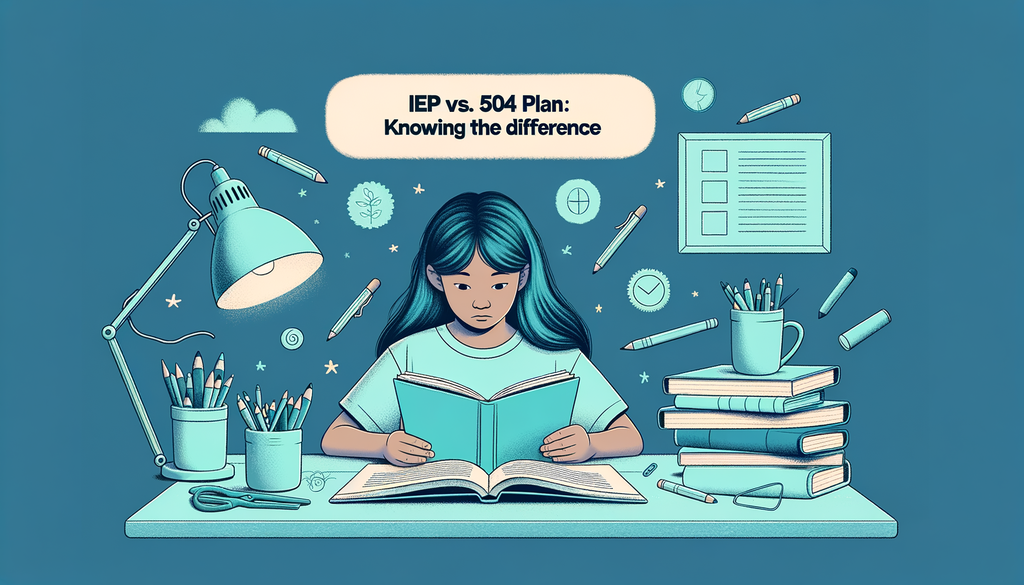IEP vs. 504 Plan: Knowing the Difference

IEP vs. 504 Plan: Knowing the Difference
When navigating the educational system for your child with special needs or exceptional abilities, understanding the difference between an Individualized Education Program (IEP) and a 504 Plan can be crucial. These legal arrangements provide accommodations and support for diverse learners, but they serve different needs and follow different procedures. So, how can we differentiate between the two, and determine which is more suitable for your child?
What is an IEP?
An IEP, short for Individualized Education Program, is a plan or program developed to ensure that a child who has a disability identified under the law and who attends elementary or secondary school, receives specialized instruction and related services. The Complete Guide to the IEP Process can give you a more detailed overview.
What is a 504 Plan?
On the other hand, a 504 Plan is a plan developed to ensure that a child who has a disability identified under Section 504 of the Rehabilitation Act of 1973 and is attending an elementary or secondary school, receives accommodations that will ensure their academic success and access to the learning environment.
IEP vs. 504 Plan: The Differences
The major distinctions come down to the law under which they were established, the eligibility criteria for students, the type of assistance provided, and the accountability measures for schools. The Legal Landscape: Your Child’s Rights in Special Education provides a deep-dive into the laws that protect the educational rights of children with special needs and how to utilize them effectively.
While an IEP is entitled under the Individuals with Disabilities Education Act (IDEA), a federal law that ensures special education services for children with disabilities, a 504 Plan falls under Section 504 of the Rehabilitation Act of 1973, a civil rights law to stop discrimination against people with disabilities.
The eligibility for an IEP is more specific, where students must be categorized under one of the 13 specific disability classifications defined by IDEA. For a 504 Plan, however, the definitions are broader – any student with a disability that restricts one or more major life activity qualifies.
Additionally, while both IEPs and 504 Plans can accommodate classroom modifications, an IEP will typically include the specific special education services, therapies, or interventions required. A 504 Plan mostly focuses on providing equal access to learning, often through mainstream classroom accommodations.
Finally, IEPs come with strict documentation and review requirements, with annual reviews mandatory, while a 504 Plan can be less formal, and schools are mandated to conduct reevaluations every three years.
Choosing the Right Plan for Your Child
Now that you understand the specificities of both IEPs and 504 Plans, choosing the appropriate one for your child largely depends on their unique needs, abilities, and the extent of their disability. If your child requires special education services and falls under one of the IDEA classifications, an IEP may serve them better. However, if they require specific accommodations but can succeed in the regular classroom and do not qualify for IDEA disability categories, a 504 Plan may be more appropriate.
Consider consulting with educators, school psychologists, and special education consultants when making this crucial decision. The most important factor is to ensure that your child’s specific needs and abilities are addressed, and they receive the necessary support to thrive in their educational journey. For insights on advocating for your needs and navigating these legal rights, see our post on From Playgrounds to Politics: Advocating for Your Gifted Child.
Remember that as a parent, you know your child best. Equip yourself with knowledge, don’t be afraid to ask questions, and always prioritize your child’s growth, development, and happiness over everything else.